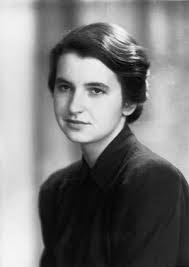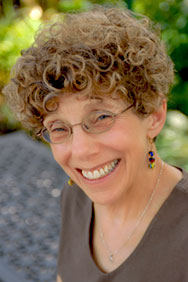Photograph 51: Rosalind Franklin and the DNA Double Helix, Part 2
 November 18, 2010
November 18, 2010 
My last post introduces Rosalind Franklin. She’s the unsung heroine whose name should go right along with “Watson & Crick.” We should be saying “Franklin, Watson, and Crick.” But alas, Franklin’s contribution to the discovery of DNA”s structure came at a time when women weren’t even considered in any professional work, even if their accomplishments were outstanding.
Also, Franklin died young, and Nobel Prizes are never awarded posthumously, so Crick and Watson and, of all people, Franklin’s nemesis Maurice Wilkins, received the Nobel for DNA. (Barbara McClintock suffered from this same lack of considerations, but fortunately, she outlived it, and received the Nobel Prize at the age of 81.)
Franklin earned her doctorate in chemistry from Cambridge University during WWII, went on to make important discoveries about carbon, then learned X-ray crystallography in Paris.
X-ray crystallography is a technique for figuring out the structure of a molecule. The substance in question must first be crystallized. Then a miniscule sample of the crystallized material is mounted on a pin, and an X-ray beam is aimed at the crystal; behind the crystal is a piece of photographic film. Most of the X-rays pass right through the empty space within the crystal and expose the film. But when an X-ray hits the nucleus of one of the atoms in the crystal, the ray gets deflected. The pattern of deflections shows dark on the photographic film after it is developed. This pattern gives strong clues about the three-dimensional positions of the atoms in the molecule.
After her work in Paris, Franklin went to King’s College in London to figure out the structure of the DNA molecule. At King’s, Wilkins had been unable to get a clear X-ray photograph of DNA.
The first thing Franklin did at King’s was to figure out that Wilkins’ DNA crystals weren’t pure. There were actually two crystalline forms of DNA, and Wilkins had been trying to X-ray a mixture of these, so of course he had been unsuccessful at finding the DNA structure.
The plot thickens. More about this in my next post; stay tuned.
 DNA,
DNA,  Rosalind Franklin,
Rosalind Franklin,  double helix
double helix 

Reader Comments